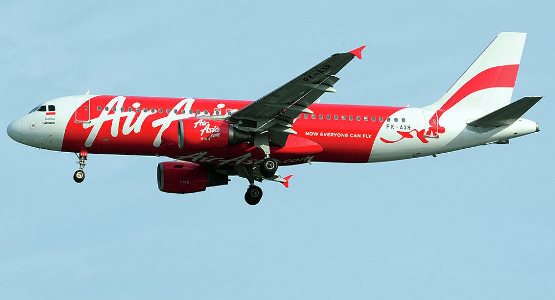 Jakarta (AFP) - The French co-pilot was at the controls of an AirAsia plane when it crashed into the sea last month after flying through an area of towering clouds, killing all 162 people on board, investigators said Thursday.
Jakarta (AFP) - The French co-pilot was at the controls of an AirAsia plane when it crashed into the sea last month after flying through an area of towering clouds, killing all 162 people on board, investigators said Thursday.The announcement came as fishermen found two more bodies from the crash in waters off Sulawesi island in central Indonesia, around 1,000 kilometres (600 miles) from where the plane crashed, a search and rescue official said.
Flight QZ8501 went down in stormy weather on December 28 in the Java Sea during what was supposed to be a short trip from the Indonesian city of Surabaya to Singapore. Only 72 bodies have so far been recovered.
On Thursday, Indonesia's National Transportation Safety Committee, which has been analysing the plane's black boxes, said that prior to the crash, the aircraft had climbed fast in an area packed with cumulonimbus -- huge clouds that pilots try to avoid.
They also revealed that the Airbus A320-200's less experienced French co-pilot, Remi Plesel, was flying the plane when it went down, rather than Captain Iriyanto, a former fighter pilot who had around 20,000 hours of flying time.
"The second-in-command was the pilot flying," chief investigator Mardjono Siswosuwarno told reporters in Jakarta, disclosing details from a preliminary report into the crash.
He said the captain sat on the left and acted as "the monitoring pilot".
Gerry Soejatman, a Jakarta-based independent aviation analyst, said that while there was nothing unusual about the co-pilot being at the controls, the question was whether the captain took the right decision when the plane got into trouble.
"The captain has a choice whether to let the co-pilot continue flying and he does the trouble-shooting, or he takes control of the aircraft and allows the co-pilot to do the trouble-shooting," he told AFP.
He said it would not be clear whether the pilot made the right choice until more analysis of the plane's black boxes -- the flight data recorder and the cockpit voice recorder -- had been conducted and made public.
Investigators' comments that the plane climbed sharply before crashing echoed those made by Transport Minister Ignasius Jonan last week.
In 30 seconds, it rose from 32,000 feet to 37,400 feet, then dipped to 32,000 feet, before descending for around three minutes when the black boxes stopped, said investigator Ertata Lananggalih.
The transport commmitee also said the cumulonimbus clouds in the area reached heights of up to 44,000 feet at the time of the crash, although they declined to say whether the plane had flown directly into them.
They also said the plane's stall alarms were going off for four minutes before the crash.
Siswosuwarno said that the plane was in good condition, and that its crew all held the correct, up-to-date licences.
The committee revealed new details of their investigation after completing the preliminary report. They have handed the report to the UN's International Civil Aviation Organization, but the whole report was not made public.
However, investigators said they hope to complete a final report in seven to eight months, which will be released.
The military, which has provided most personnel and equipment for the hunt, withdrew from the search this week, saying that it could find no more bodies in the jet's main section. The navy had also repeatedly failed to lift the badly damaged fuselage.
Indonesia's civilian search and rescue agency is continuing the hunt for victims, but on a smaller scale.
By AFP
The Iran Project is not responsible for the content of quoted articles.










